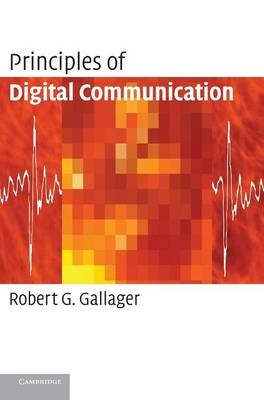
Principles of Digital Communication
Seiten
2008
Cambridge University Press (Verlag)
978-0-521-87907-1 (ISBN)
Cambridge University Press (Verlag)
978-0-521-87907-1 (ISBN)
The renowned communications theorist Robert Gallager describes the fundamental system aspects of digital communication for graduate students with the clarity and insight that has characterized his teaching and earlier textbooks. A simple framework, and links between theory and practice, encourages an intuitive understanding of modern systems and models.
The renowned communications theorist Robert Gallager brings his lucid writing style to the study of the fundamental system aspects of digital communication for a one-semester course for graduate students. With the clarity and insight that have characterized his teaching and earlier textbooks, he develops a simple framework and then combines this with careful proofs to help the reader understand modern systems and simplified models in an intuitive yet precise way. A strong narrative and links between theory and practice reinforce this concise, practical presentation. The book begins with data compression for arbitrary sources. Gallager then describes how to modulate the resulting binary data for transmission over wires, cables, optical fibers, and wireless channels. Analysis and intuitive interpretations are developed for channel noise models, followed by coverage of the principles of detection, coding, and decoding. The various concepts covered are brought together in a description of wireless communication, using CDMA as a case study.
The renowned communications theorist Robert Gallager brings his lucid writing style to the study of the fundamental system aspects of digital communication for a one-semester course for graduate students. With the clarity and insight that have characterized his teaching and earlier textbooks, he develops a simple framework and then combines this with careful proofs to help the reader understand modern systems and simplified models in an intuitive yet precise way. A strong narrative and links between theory and practice reinforce this concise, practical presentation. The book begins with data compression for arbitrary sources. Gallager then describes how to modulate the resulting binary data for transmission over wires, cables, optical fibers, and wireless channels. Analysis and intuitive interpretations are developed for channel noise models, followed by coverage of the principles of detection, coding, and decoding. The various concepts covered are brought together in a description of wireless communication, using CDMA as a case study.
Robert G. Gallager is a Professor in the Electrical and Computer Engineering department at the Massachusetts Institute of Technology. A fellow of the IEEE, and a member of the US National Academy of Engineering, Robert has had a profound influence over the years on the development of modern communications systems.
Preface; 1. Introduction to digital communication; 2. Coding for discrete sources; 3. Quantization; 4. Source and channel waveforms; 5. Vector spaces and signal space; 6. Channels, modulation, and demodulation; 7. Random processes and noise; 8. Detection, coding and decoding; 9. Wireless digital communication.
| Erscheint lt. Verlag | 28.2.2008 |
|---|---|
| Zusatzinfo | Worked examples or Exercises; 100 Line drawings, unspecified |
| Verlagsort | Cambridge |
| Sprache | englisch |
| Maße | 181 x 251 mm |
| Gewicht | 990 g |
| Themenwelt | Technik ► Nachrichtentechnik |
| ISBN-10 | 0-521-87907-8 / 0521879078 |
| ISBN-13 | 978-0-521-87907-1 / 9780521879071 |
| Zustand | Neuware |
| Haben Sie eine Frage zum Produkt? |
Mehr entdecken
aus dem Bereich
aus dem Bereich
Basic Principles
Buch | Hardcover (2023)
Institution of Engineering and Technology (Verlag)
CHF 209,45
Buch | Hardcover (2022)
Institution of Engineering and Technology (Verlag)
CHF 249,95
Buch | Hardcover (2022)
Institute of Physics Publishing (Verlag)
CHF 209,45


